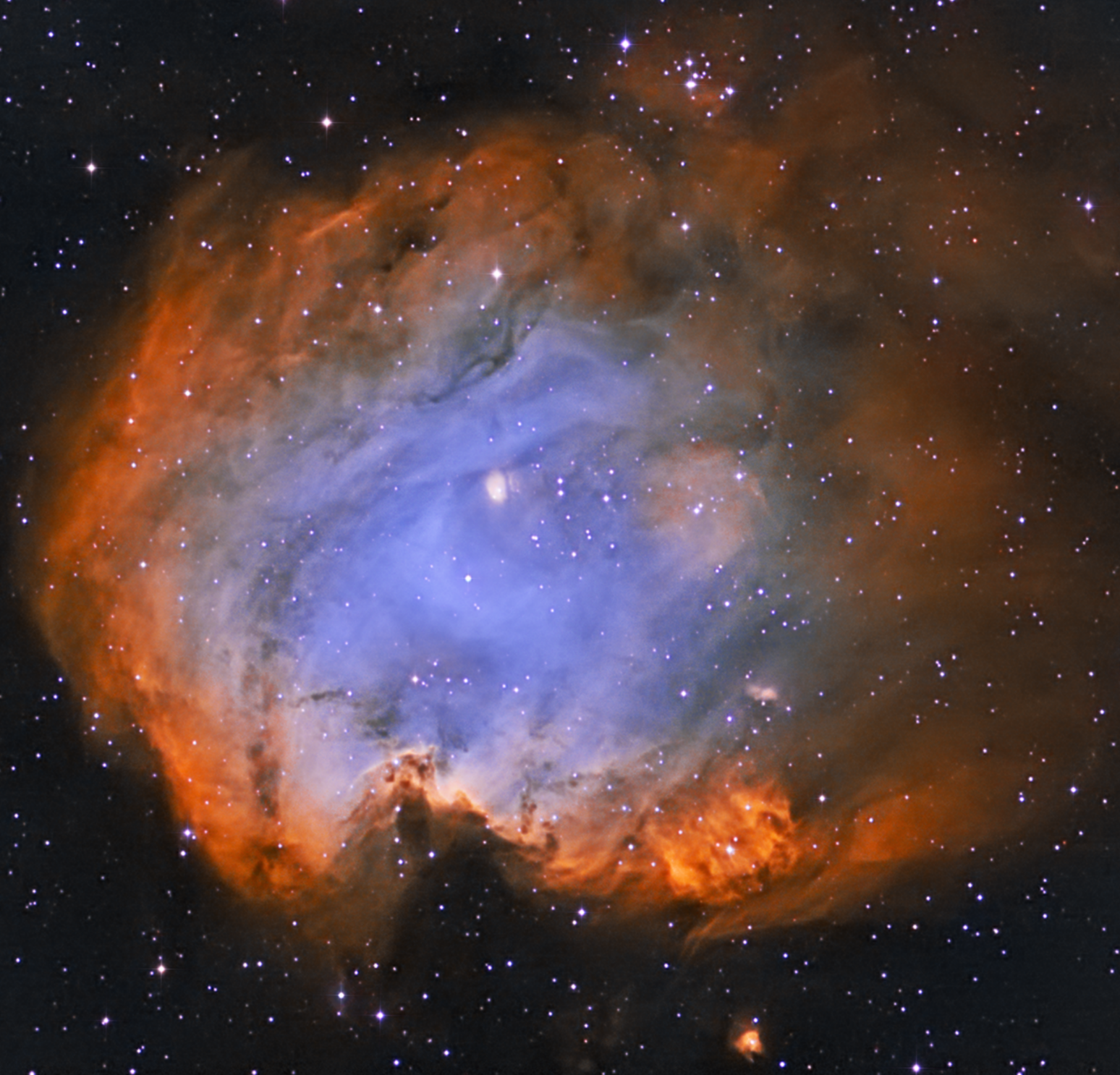Instruments and exposure data:
W.O FLT110 with dedicated TMB field flattener
FeatherTouch 3'' focuser
Starizona MicroTouch autofocuser
W.O ZS80 ED
SBIG ST10XME CFW9
Meade DSI
Sky-Watcher EQ6 Pro
Tricolor Emmision Line image
S[II] 8nm(Red)_Ha 5nm(Green)_O[III] 3nm(Blue)
Modified Hubble Palette
S[II] 25*15min_Ha 29*15min_O[III] 18*15min
total exposure time : 1080min (18h)
The
Elephant's Trunk nebula is a concentration of
interstellar gas and dust in the
star cluster IC 1396 – an
ionized gas region located in the constellation
Cepheus about 2,400
light years away from
Earth.
[1] The piece of the
nebula shown here is the dark, dense globule IC 1396A; it is commonly called the Elephant's Trunk nebula because of its appearance at
visible light wavelengths, where there is a dark patch with a bright, sinuous rim. The bright rim is the surface of the dense cloud that is being illuminated and ionized by a very bright,
massive star that is just to the west of IC 1396A.The entire IC 1396 region is ionized by the massive star, except for dense globules that can protect themselves from the star's harsh
ultraviolet rays.
The Elephant's Trunk nebula is now thought to be a site of star formation, containing several very young (less than 100,000 yr) stars that were discovered in infrared images in 2003. Two older (but still young, a couple of million years, by the standards of
stars, which live for billions of years) stars are present in a small, circular cavity in the head of the globule. Winds from these young stars may have emptied the cavity.
The combined action of the light from the massive star ionizing and compressing the rim of the cloud, and the wind from the young stars shifting gas from the center outward lead to very high compression in the Elephant's Trunk nebula. This pressure has triggered the current generation of protostars.
[2]
















